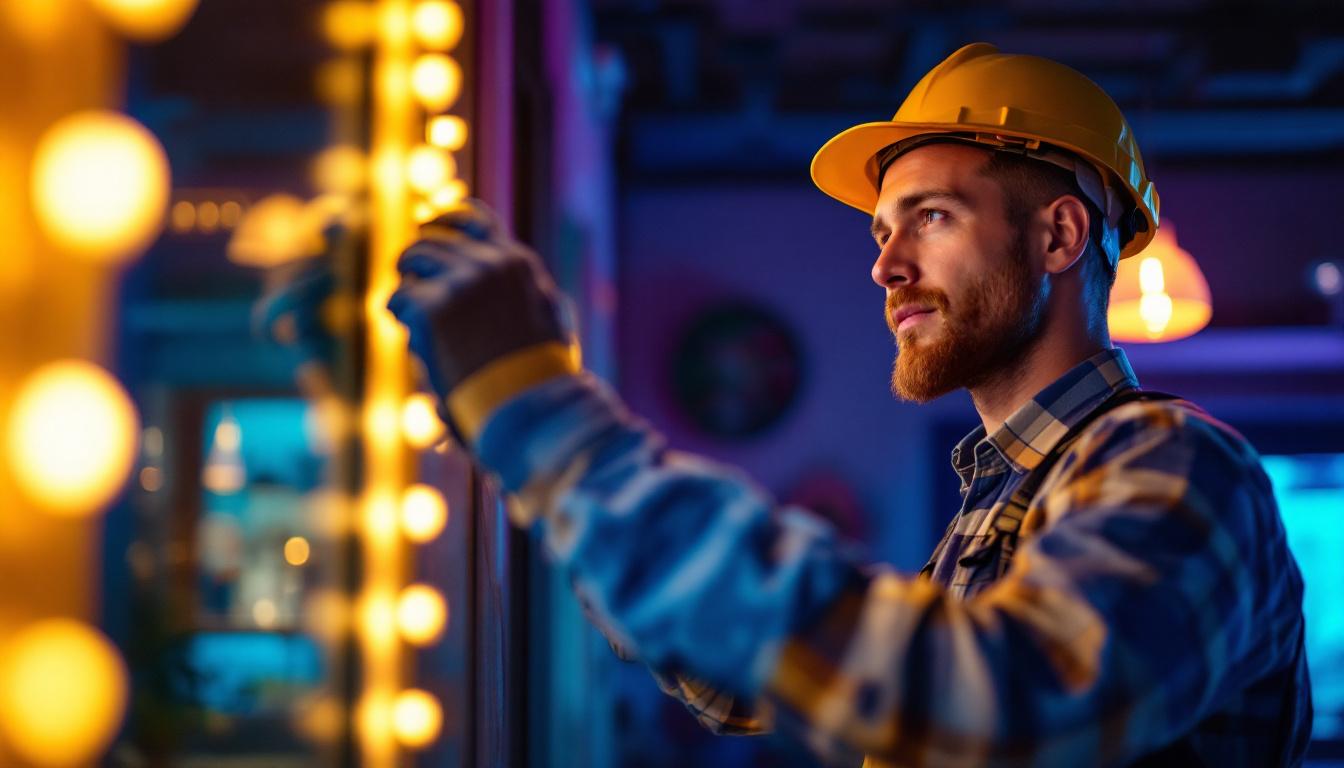
In the evolving world of lighting technology, LED exterior ceiling lights have emerged as a popular choice for both residential and commercial applications. Their energy efficiency, longevity, and versatility make them an ideal option for outdoor settings. However, to fully harness the benefits of these lighting solutions, it is crucial for lighting contractors to train their teams effectively. This article will explore various strategies for training teams in the nuances of LED exterior ceiling lights, ensuring they are well-equipped to meet client needs and expectations.
The foundation of effective training begins with a solid understanding of LED technology. LEDs, or Light Emitting Diodes, differ significantly from traditional lighting options such as incandescent or fluorescent bulbs. They operate on a different principle, converting electricity directly into light, which results in greater efficiency and reduced heat output. This fundamental shift in how light is produced not only contributes to energy conservation but also aligns with the growing demand for sustainable practices in both residential and commercial sectors.
One of the key advantages of LED lights is their energy efficiency. They consume significantly less power than traditional lighting solutions, which can lead to substantial savings on energy bills for clients. Additionally, LEDs have a longer lifespan, often lasting up to 25,000 hours or more, which reduces the frequency of replacements and maintenance. This longevity not only benefits the environment by minimizing waste but also enhances the overall value proposition for clients seeking reliable lighting solutions.
Furthermore, LED lights are available in a variety of color temperatures, allowing contractors to create the desired ambiance for outdoor spaces. From warm white to cool daylight, understanding these options is essential for providing clients with tailored lighting solutions. The ability to adjust color temperature can also influence mood and functionality; for example, warmer tones can create a cozy atmosphere for outdoor gatherings, while cooler tones can enhance visibility and safety in commercial settings.
LED exterior ceiling lights can be utilized in numerous settings, including patios, porches, and commercial outdoor spaces. Training should cover the various applications and how to select the right fixtures for each scenario. For instance, dimmable options may be more suitable for residential areas, while brighter, more robust fixtures might be necessary for commercial environments. Understanding the specific needs of different applications will enable teams to make informed recommendations, enhancing customer satisfaction and trust.
Moreover, the versatility of LED technology allows for innovative design solutions. For example, integrated smart lighting systems can be programmed for various functions, such as motion detection or automated dimming based on the time of day. This not only improves energy efficiency but also adds a layer of convenience and security for homeowners and businesses alike. Training programs should emphasize the importance of staying updated with the latest advancements in LED technology, as this knowledge can empower teams to offer cutting-edge solutions that meet the evolving demands of the market.
Once the team has grasped the fundamentals of LED technology, the next step is to focus on installation best practices. Proper installation is critical to ensuring the longevity and performance of LED exterior ceiling lights.
Before any installation begins, conducting a thorough site assessment is essential. This involves evaluating the space, considering factors such as existing electrical infrastructure, potential obstacles, and the desired lighting effect. Training should emphasize the importance of this step, as it lays the groundwork for a successful installation.
During the planning phase, teams should also consider the positioning of fixtures. Proper placement can significantly impact the effectiveness of the lighting, creating an inviting atmosphere while minimizing glare and shadows. Encourage team members to visualize the final outcome and adjust their plans accordingly. It may also be beneficial to create a lighting layout diagram, which can serve as a reference during installation. This visual aid can help ensure that all team members are on the same page and can facilitate smoother communication throughout the process.
Understanding electrical requirements is vital for safe and effective installation. Teams should be trained on the specific voltage and wattage requirements of LED fixtures, as well as the importance of using compatible dimmers and controls. This knowledge will prevent potential issues that could arise from improper electrical setups.
Additionally, safety protocols must be emphasized during training. Team members should be well-versed in electrical safety practices, ensuring they can work confidently and securely during installations. It’s also prudent to familiarize the team with local electrical codes and regulations, as compliance is not only a legal requirement but also a key factor in ensuring the safety and reliability of the installation. Regular safety drills and refresher courses can help keep this knowledge fresh and reinforce the importance of adhering to these guidelines in every project.
Even the best-installed LED exterior ceiling lights may require maintenance or troubleshooting over time. Training should encompass routine maintenance practices and common troubleshooting techniques to empower teams to address issues proactively.
Regular maintenance is essential for ensuring the longevity and efficiency of LED fixtures. Teams should be trained to perform routine checks, including cleaning fixtures to remove dirt and debris that can obstruct light output. Additionally, they should be familiar with inspecting electrical connections and ensuring that all components are functioning correctly.
Encouraging a proactive maintenance approach can help prevent minor issues from escalating into more significant problems, ultimately saving time and resources for both the contractor and the client.
Despite the reliability of LED technology, issues can still arise. Training should cover common problems, such as flickering lights, dimming, or complete failure. Teams should learn to diagnose these issues effectively, identifying whether they stem from the fixture itself, the electrical supply, or external factors.
Providing team members with a troubleshooting guide can be an invaluable resource, allowing them to address issues efficiently and maintain client satisfaction.
Effective communication with clients is a critical component of any successful lighting project. Training should include strategies for educating clients about the benefits and features of LED exterior ceiling lights, ensuring they understand the value of their investment.
One of the most compelling selling points of LED lights is their energy efficiency. Teams should be trained to articulate how switching to LED can lead to significant cost savings over time. Providing clients with clear comparisons between traditional lighting options and LEDs can help them make informed decisions.
Additionally, discussing the environmental benefits of LED technology can resonate with eco-conscious clients. Highlighting how LEDs reduce energy consumption and lower carbon footprints can enhance the appeal of these lighting solutions.
It is crucial for teams to set realistic expectations regarding the performance and lifespan of LED fixtures. Clients should be informed about factors that can affect performance, such as environmental conditions and usage patterns. By providing transparent information, contractors can build trust and foster long-term relationships with clients.
The lighting industry is constantly evolving, with new technologies and trends emerging regularly. Training should emphasize the importance of staying updated with these changes to remain competitive and knowledgeable.
Encouraging team members to pursue continuous education opportunities can be beneficial for both personal and professional growth. Workshops, webinars, and industry conferences can provide valuable insights into the latest advancements in LED technology and installation techniques.
Additionally, subscribing to industry publications and joining professional organizations can help teams stay informed about emerging trends and best practices.
Building a network of industry professionals can also provide valuable resources for training and development. Encouraging team members to connect with other contractors, suppliers, and manufacturers can lead to knowledge sharing and collaboration opportunities.
Networking can also open doors to potential partnerships, enhancing the overall service offerings of the contracting team.
Incorporating technology into training programs can enhance the learning experience and improve retention. Utilizing digital tools and resources can make training more engaging and accessible for team members.
Creating online training modules can provide team members with the flexibility to learn at their own pace. These modules can cover various topics, from LED technology fundamentals to installation techniques and troubleshooting. Incorporating interactive elements, such as quizzes and videos, can make the training more dynamic and enjoyable.
Additionally, online resources can be updated easily, ensuring that team members always have access to the most current information.
As technology continues to advance, virtual reality training is becoming an innovative option for hands-on learning. VR can simulate real-world installation scenarios, allowing team members to practice their skills in a controlled environment. This immersive experience can boost confidence and improve retention of critical information.
While implementing VR training may require an initial investment, the long-term benefits of improved skill development can outweigh the costs.
Training a team in the intricacies of LED exterior ceiling lights is essential for lighting contractors looking to thrive in a competitive market. By focusing on understanding LED technology, installation best practices, maintenance, client communication, and leveraging technology in training, teams can be well-prepared to meet client needs and expectations.
As the lighting industry continues to evolve, ongoing education and adaptation will be key to success. Investing in training not only enhances the skills of the team but also builds trust and credibility with clients, ultimately leading to a more successful and sustainable business.
Ready to elevate your lighting projects with the best LED exterior ceiling lights on the market? Look no further than LumenWholesale, where we provide contractors with exceptional, spec-grade lighting products at unbeatable wholesale prices. Say goodbye to local distributor markups and hello to our extensive selection that meets the highest industry standards. With free shipping on bulk orders, you can stock up on reliable, high-performance lighting without any hidden fees. Make your next project shine with the perfect blend of quality, affordability, and convenience. Visit LumenWholesale now for Wholesale Lighting at the Best Value.

Discover essential compliance insights for lighting contractors in our comprehensive guide on Sylvania standards.

Discover expert insights on tracking LED lights from top lighting contractors.

Discover why the 3 plug wall outlet is a game-changer for lighting contractors.

Explore the revolutionary world of Surface Light technology, where cutting-edge design meets innovative installation techniques.